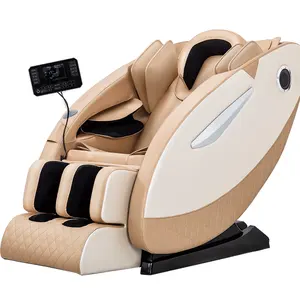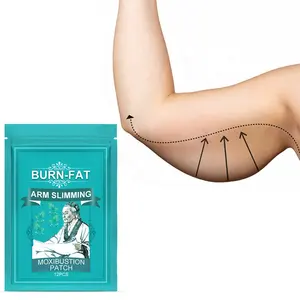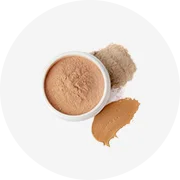ได้รับความนิยมในอุตสาหกรรมของคุณ






ชุดป้องกันไฟฟ้าชุดคลุมสำหรับจำหน่ายเทคโนโลยีใหม่
฿6.67 - ฿10.37
การสั่งซื้อขั้นต่ำ: 10 ชิ้น
การจัดส่งต่อชิ้น: ฿252.21







การปรับแต่งคุณภาพสูงทิ้ง Coveralls ผสมรูขุมพรุนชุดทํางานสวมสูทราคาสวยโรงงานขายส่ง
฿6.67 - ฿10.37
การสั่งซื้อขั้นต่ำ: 10 ชิ้น
การจัดส่งต่อชิ้น: ฿252.21







ป้องกันฝุ่นสีน้ำเงินเข้ม PP ฝาครอบ Coverall ทิ้ง
พร้อมส่ง
฿31.48
การสั่งซื้อขั้นต่ำ: 500 ชิ้น
การจัดส่งต่อชิ้น: ฿14.08







เด็กสาวฟองเสื้อผ้าO Nesie Topภาษาฝรั่งเศสคําเทอร์รี่แขนยาวเสื้อกันหนาวขนาดใหญ่บอดี้สูทเด็กทารกสาวเสื้อสเวตเตอร์ถักRomper
฿166.66 - ฿196.29
การสั่งซื้อขั้นต่ำ: 50 ชิ้น
การจัดส่งต่อชิ้น: ฿35.19







ชุดคลุมป้องกันผ้าใยสังเคราะห์แบบใช้แล้วทิ้ง Tyvek CLASSIC Xpert Coverall hazmat
฿24.08 - ฿44.45
การสั่งซื้อขั้นต่ำ: 1000 ชิ้น
การจัดส่งต่อชิ้น: ฿29.26


ชุดกระโปรงเต้นรำสำหรับเด็กผู้หญิงชุดละตินสำหรับเด็กผู้หญิง CJ-015เต้นแจ๊ส
฿888.84 - ฿1,185.12
การสั่งซื้อขั้นต่ำ: 2 ชิ้น






อเมริกาได้รับพรสวรรค์ไร้สายควบคุมไฟ LED สมดุลเต้นรำเครื่องแต่งกาย,อนาคตนำแสงตรอนชุดเต้นรำ
฿20,369.17 - ฿31,849.97
การสั่งซื้อขั้นต่ำ: 2 ชิ้น






Led หุ่นยนต์เสื้อผ้าเสื้อผ้า Luminous Dance Performance สำหรับ Night Club Led Light Up Cpstumes เครื่องแต่งกายเต้นรำ Led หุ่นยนต์ชุด
฿2,148.03 - ฿18,221.15
การสั่งซื้อขั้นต่ำ: 2 ชุด






ชุดเต้นระบำหน้าท้อง Yifusha,ชุดเต้นรำบอลลีวูด3ชิ้น
พร้อมส่ง
฿477.01 - ฿502.94
การสั่งซื้อขั้นต่ำ: 1 ชุด
การจัดส่งต่อชิ้น: ฿452.94






ชุดเต้นซัลซ่าละตินสำหรับผู้หญิง,ชุดเต้นเด็กผู้หญิง
พร้อมส่ง
฿1,296.22 - ฿1,666.57
การสั่งซื้อขั้นต่ำ: 1 ชิ้น
การจัดส่งต่อชิ้น: ฿594.41






ชุดบรามีพู่ลูกปัดทำมือ,ชุดสำหรับแสดงบนเวทีเต้นรำหน้าท้องกระโปรงผ้าชีฟอง3ชั้น
฿1,296.22 - ฿1,592.50
การสั่งซื้อขั้นต่ำ: 1 ชุด






ชุดเต้นรำสำหรับผู้หญิง,ชุดเต้นรำบอลรูมชุดเต้นรำสมัยใหม่ชุดเสื้อและกระโปรงชุดเต้นแบบโคลงสั้นๆ
฿1,355.48 - ฿1,563.99
การสั่งซื้อขั้นต่ำ: 2 ชิ้น
การค้นหาที่เกี่ยวข้อง:






ผู้หญิงเต้นรำอินเดีย Bollywood ชุดสำหรับประสิทธิภาพ
พร้อมส่ง
฿962.91 - ฿1,333.26
การสั่งซื้อขั้นต่ำ: 2 ชุด
การจัดส่งต่อชิ้น: ฿560.34






ชุดเต้นระบำหน้าท้องแบบชิ้นเดียวระบายอากาศได้ดีชุดออกกำลังกายกระชับหน้าท้องสำหรับผู้หญิงชุดออกกำลังกายแบบยืดได้สีพลัสไซส์
฿459.24 - ฿685.15
การสั่งซื้อขั้นต่ำ: 10 ชุด








BestDance ปาร์ตี้ชุดแฟนซีเลื่อมเครื่องแต่งกายเต้นรําท้องกระโปรงสูท
฿221.47 - ฿369.61
การสั่งซื้อขั้นต่ำ: 30 ชุด






ชุดเต้นรำบอลรูมสำหรับผู้ชาย,ชุดเต้นรำมาตรฐานสากลแบบสั่งตัด
พร้อมส่ง
฿9,851.27 - ฿10,295.69
การสั่งซื้อขั้นต่ำ: 1 ชิ้น
การจัดส่งต่อชิ้น: ฿1,642.13






ชุดเต้นรำแจ๊สโมเดิร์น,ชุดละตินพร้อมพู่เลื่อม
พร้อมส่ง
฿296.28 - ฿351.84
การสั่งซื้อขั้นต่ำ: 2 ชุด
การจัดส่งต่อชิ้น: ฿299.99



กระจกเงินชายแก้ว Man เครื่องแต่งกาย STAGE DJ Dance ชุด
พร้อมส่ง
฿18,480.39 - ฿20,554.34
การสั่งซื้อขั้นต่ำ: 1 ชุด
การจัดส่งต่อชิ้น: ฿1,624.35






LED Luminous ยูนิคอร์นม้า Catwalk เครื่องแต่งกายสําหรับสาวงานรื่นเริงวิกตอเรียเซ็กซี่เลดี้ชุดราตรีการแสดงเต้นรํา DJ เสื้อผ้า
พร้อมส่ง
฿5,555.23 - ฿5,925.58
การสั่งซื้อขั้นต่ำ: 1 แพ็ค
การจัดส่งต่อชิ้น: ฿0.00






ชุดเต้นรำละตินสำหรับเด็กผู้หญิง,ชุดเดรสสำหรับการแสดงละติน
พร้อมส่ง
฿587.75 - ฿1,195.49
การสั่งซื้อขั้นต่ำ: 1 ชิ้น
การจัดส่งต่อชิ้น: ฿167,498.59






ชุดเต้นระบำหน้าท้องปักเลื่อมของเด็กผู้หญิง,ชุดเต้นรำสไตล์อียิปต์เซ็กซี่สำหรับงานแสดงศิลปะงานเลี้ยงคอสเพลย์ (XF-073)
฿370.35 - ฿2,222.10
การสั่งซื้อขั้นต่ำ: 20 ชุด





2015เต้นรำท้องมืออาชีพราคาถูกอินเดียอาหรับเครื่องแต่งกายเต้นรำชุด7ชิ้น/ต่อหน่วย
฿444.42 - ฿740.70
การสั่งซื้อขั้นต่ำ: 2 ชุด






ชุดหุ่นยนต์กระจกคอสเพลย์สำหรับผู้ชายชุดการแสดงบนเวทีชุดหุ่นยนต์กระจกสำหรับเต้นดีเจสีเงิน2023ใหม่
฿5,184.88 - ฿6,184.82
การสั่งซื้อขั้นต่ำ: 2 ชิ้น
การจัดส่งต่อชิ้น: ฿2,879.09






ชุดบัลเล่ต์แขนสั้นสำหรับผู้หญิง,ชุดเต้นระบำยิมนาสติกแขนสั้นสำหรับเด็กปี Y16
฿159.25 - ฿222.21
การสั่งซื้อขั้นต่ำ: 2 คู่






ชุดเดรสสำหรับเด็กผู้หญิงชุดเดรสสำหรับเต้นแบบแจ๊ส
พร้อมส่ง
฿269.62
การสั่งซื้อขั้นต่ำ: 1 ชิ้น
การจัดส่งต่อชิ้น: ฿588.86



Funtoys ชุดเดรสแฟนซีเรืองแสงสำหรับงานปาร์ตี้ชุดเดรสไฟ LED ชุดเต้นนักบินอวกาศสำหรับไนท์คลับ
฿3,703.49 - ฿11,036.39
การสั่งซื้อขั้นต่ำ: 2 ชิ้น






ชุดเต้นรำแจ๊สฮิปฮอปสำหรับเด็กชุดแสดงเต้นรำชุดสำหรับเด็กชายและเด็กหญิงชุดเต้นแจ๊ส
พร้อมส่ง
฿159.25 - ฿184.44
การสั่งซื้อขั้นต่ำ: 2 ชุด
การจัดส่งต่อชิ้น: ฿226.29






Lovely Girls Dance SequinsกระโปรงTulleเด็กFairyคอสเพลย์ชุดหัวสวมใส่Stage Performanceชุด
พร้อมส่ง
฿55.56
การสั่งซื้อขั้นต่ำ: 500 ชิ้น
การจัดส่งต่อชิ้น: ฿1,711.38






ชุดเต้นรำแนวสตรีทของเด็กผู้ชายชุดการแสดงชุดร็อคชุดสำหรับเด็กผู้หญิงชุดเต้นรำแจ๊สสำหรับ2024
พร้อมส่ง
฿388.87 - ฿444.42
การสั่งซื้อขั้นต่ำ: 2 ชิ้น
การจัดส่งต่อชิ้น: ฿371.09






ชุดเดรสกระโปรงซ้อมเต้นแบบวงสวิงขนาดใหญ่,ชุดฝึกซ้อมเต้นบอลรูมแบบสั่งตัดชุดเทรนนิ่งแข่งขันแบบวอลทซ์ปี M-1638
พร้อมส่ง
฿4,259.01 - ฿4,629.36
การสั่งซื้อขั้นต่ำ: 1 ชิ้น
การจัดส่งต่อชิ้น: ฿0.00






ชุดเต้นบัลเล่ต์สำหรับผู้หญิง,ชุดฝึกซ้อมเต้นสีดำโมเดิร์นแขนยาวครึ่งแขนผ้าตาข่ายสำหรับผู้ใหญ่
พร้อมส่ง
฿185.18 - ฿296.28
การสั่งซื้อขั้นต่ำ: 5 ชิ้น
การจัดส่งต่อชิ้น: ฿127.78












ชุดฝึกเต้นสำหรับเด็กผู้หญิงชุดบอดี้สูทระบายอากาศได้ดีวัสดุดีที่สุดสำหรับเด็กผู้หญิงชุดฝึกเต้นสำหรับวัยรุ่นดีไซน์ตามสั่ง
฿329.62 - ฿629.60
การสั่งซื้อขั้นต่ำ: 50 ชิ้น






2023แฟชั่นออกกำลังกายกีฬาสไตล์เสื้อผ้าซิปออกแบบเอวสูงกางเกงขาสั้นเสาชุดเต้นรำ
฿259.25 - ฿481.46
การสั่งซื้อขั้นต่ำ: 50 ชุด






เต้นรําชุดเสื้อผ้าเวทีนักเต้นสวมใส่ผู้หญิง Belly Dance เครื่องแต่งกาย 2 ชิ้นชุดเต้นรํา
฿370.35 - ฿592.56
การสั่งซื้อขั้นต่ำ: 10 ชิ้น
- 10%



ชุดว่ายน้ำแบบซิงโครไนซ์สำหรับผู้หญิง,ชุดว่ายน้ำเอวสูงสำหรับการแสดงลีลายิมนาสติกเต้นรำรัดรูปแข่งขัน
พร้อมส่ง
฿1,665.83 - ฿2,332.46
การสั่งซื้อขั้นต่ำ: 1 ชิ้น
การจัดส่งต่อชิ้น: ฿259.25






เสื้อแจ็กเก็ตระยิบระยับสำหรับผู้ชาย,เสื้อแจ็กเก็ตสำหรับใส่ออกงานปาร์ตี้ปักเลื่อมเสื้อโค้ทระยิบระยับสำหรับใส่ไปงานแต่งงานเสื้อสูทสุภาพบุรุษทางการปี2022
พร้อมส่ง
฿570.34 - ฿619.97
การสั่งซื้อขั้นต่ำ: 2 ชิ้น
การจัดส่งต่อชิ้น: ฿624.04






เสื้อแจ็กเก็ตประดับเลื่อมสำหรับผู้ชาย,เสื้อสูททางการเสื้อโค้ทระยิบระยับสำหรับใส่เต้นรำงานเลี้ยงแต่งงานเสื้อสูทสุภาพบุรุษ
พร้อมส่ง
฿570.71 - ฿620.34
การสั่งซื้อขั้นต่ำ: 1 ชิ้น
การจัดส่งต่อชิ้น: ฿489.61
หมวดหมู่ยอดนิยม
เกี่ยวกับ ชุดเต้นรำ
ชุดเต้นรำ ไม่ใช่เรื่องใหม่สำหรับคนทั่วไปในปัจจุบันและไม่ถือว่าเป็นสิ่งต้องห้ามอีกต่อไป หากคุณกำลังมองหาความสุขสุดท้ายนี้คุณต้องตรวจสอบความยิ่งใหญ่ คอลเลกชัน ชุดเต้นรำ ที่ Alibaba.com เหล่านี้ยั่วยวนและโค้ง ชุดเต้นรำ คุ้มค่ากับเงินทุกบาทและมั่นใจว่าจะทำให้ค่ำคืนนี้พิเศษสำหรับคุณ ตุ๊กตาเหล่านี้มีลักษณะเหมือนจริงตั้งแต่ขนไปจนถึงปลายเท้าในทุกแง่มุม
ไม่ว่าคุณจะเป็นคนขี้เหงาที่กำลังมองหาคู่ชีวิตที่เหมือนมีชีวิตหรือคู่รักที่ต้องการเติมชีวิตชีวาให้กับชีวิตคุณสามารถใช้สิ่งเหล่านี้ได้ . ชุดเต้นรำ สำหรับจุดไฟนั้น ที่งดงามเหล่านี้ ชุดเต้นรำ สามารถปรับแต่งได้ตามความคาดหวังของคุณ น่าทึ่งเหล่านี้ ชุดเต้นรำ มีให้เลือกทั้งชายและหญิงและทำจากซิลิโคนเกรดยาเพื่อความปลอดภัยในการใช้งาน รับตอนนี้และเพลิดเพลินไปกับค่ำคืนแห่งความหลงใหลและไฟ
Alibaba.com ขอเสนอสิ่งที่น่าทึ่งเหล่านี้ ชุดเต้นรำ ในทุกรูปร่างขนาดและชาติพันธุ์ ไม่ว่าความต้องการของคุณสำหรับไฟล์. ชุดเต้นรำ คุณสามารถหาได้ทั้งหมดบนไซต์ เหล่านี้ ชุดเต้นรำ ได้รับการขึ้นรูปโดยช่างฝีมือที่ดีที่สุดและทุกรายละเอียดที่ซับซ้อนจะได้รับการตรวจสอบอย่างละเอียด ตุ๊กตาเหล่านี้มีดวงตาผมเล็บและส่วนอื่น ๆ ของร่างกายคล้ายกับคนในชีวิตจริง
Alibaba.com ให้บริการที่หลากหลาย ชุดเต้นรำ ที่สามารถช่วยคุณซื้อผลิตภัณฑ์ที่เหมาะสมกับงบประมาณของคุณและข้อกำหนดอื่น ๆ ผลิตภัณฑ์เหล่านี้ปลอดภัยต่อการใช้งานได้รับการรับรองและเป็นมิตรกับสิ่งแวดล้อม มีคำสั่งซื้อ OEM สำหรับผลิตภัณฑ์เหล่านี้
ไม่ว่าคุณจะเป็นคนขี้เหงาที่กำลังมองหาคู่ชีวิตที่เหมือนมีชีวิตหรือคู่รักที่ต้องการเติมชีวิตชีวาให้กับชีวิตคุณสามารถใช้สิ่งเหล่านี้ได้ . ชุดเต้นรำ สำหรับจุดไฟนั้น ที่งดงามเหล่านี้ ชุดเต้นรำ สามารถปรับแต่งได้ตามความคาดหวังของคุณ น่าทึ่งเหล่านี้ ชุดเต้นรำ มีให้เลือกทั้งชายและหญิงและทำจากซิลิโคนเกรดยาเพื่อความปลอดภัยในการใช้งาน รับตอนนี้และเพลิดเพลินไปกับค่ำคืนแห่งความหลงใหลและไฟ
Alibaba.com ขอเสนอสิ่งที่น่าทึ่งเหล่านี้ ชุดเต้นรำ ในทุกรูปร่างขนาดและชาติพันธุ์ ไม่ว่าความต้องการของคุณสำหรับไฟล์. ชุดเต้นรำ คุณสามารถหาได้ทั้งหมดบนไซต์ เหล่านี้ ชุดเต้นรำ ได้รับการขึ้นรูปโดยช่างฝีมือที่ดีที่สุดและทุกรายละเอียดที่ซับซ้อนจะได้รับการตรวจสอบอย่างละเอียด ตุ๊กตาเหล่านี้มีดวงตาผมเล็บและส่วนอื่น ๆ ของร่างกายคล้ายกับคนในชีวิตจริง
Alibaba.com ให้บริการที่หลากหลาย ชุดเต้นรำ ที่สามารถช่วยคุณซื้อผลิตภัณฑ์ที่เหมาะสมกับงบประมาณของคุณและข้อกำหนดอื่น ๆ ผลิตภัณฑ์เหล่านี้ปลอดภัยต่อการใช้งานได้รับการรับรองและเป็นมิตรกับสิ่งแวดล้อม มีคำสั่งซื้อ OEM สำหรับผลิตภัณฑ์เหล่านี้











